S & E Asia 196 - Hong Kong 01: Introduction to Hong Kong and its Central District
Jan 16, 2023 11:19:39 #
With this initial post on HONG KONG, I start the fourth and final segment covering our 2013 trip to Southeast and East Asia. Earlier segments covered Chengdu and the Jiuzhaigu region of Sichuan in Southwestern China, followed by Myanmar and Northern Thailand. As usual, this initial intro to this newest segment is quite voluminous, but it sets the scene to better understand the images in the upcoming posts.
Our family has had strong ties with Hong Kong for over 70 years. My wife Susan was born in the then British Crown Colony and I first set foot in its confines as a 24 year old in 1968, when I was working as a bank auditor (inspectors we were then called) as part of a roving team covering most of Asia, excepting the Near East. I was there for a tour of three years which culminated with our marriage in Hong Kong in 1971. From 1979 to 1984 we were anew stationed in Hong Kong, when I was working for a Swiss bank. After being transferred back to Canada, we subsequently visited Hong Kong frequently either as visitors or working on short-term bank audit assignments. Supported by Susan's deep insight into Chinese customs and traditions, I personally profited from these prolonged exposures to interesting parts of the Chinese way of life.
In this upcoming series of posts I will try to show facets of life in Hong Kong that every tourist sees, but hope to also bring more unusual places of this interesting, tiny slab of land and customs to the viewers. These presentations are by no means intended to give an overall picture of Hong Kong, but rather just present in some details the few places we visited on this particular trip, concentrating to a good extent on outlying or unusual places rather than on the more common views of Hong Kong. One of these days I will have to take the time to assemble my photos from our many trips and come up with a more overall coverage of this interesting place, for now, these glimpses will have to suffice.
OVERVIEW
HONG KONG (香港), officially the "Hong Kong Special Administrative Region of the People's Republic of China", is a city and region of China on the eastern Pearl River Delta in South China. With 7.5 million residents of various nationalities in a 1,104 km² (426 sq mi) territory, Hong Kong is one of the most densely populated places in the world, it is also a major global financial center and one of the most developed cities on earth. For such a small land area, Hong Kong has a phenomenal amount of coastline: 456 km (285 mi) is the length of the coastline running round the main area of Hong Kong from one side of the New Territories to the other, while the 263 islands in Hong Kong waters between them have another 722 km (451 mi) of coastline.
Hong Kong was established as a colony of the British Empire after the Qing Empire ceded Hong Kong Island at the end of the First Opium War in 1841. The colony expanded to the Kowloon Peninsula in 1860 after the Second Opium War and was further extended when Britain obtained a 99-year lease of the New Territories in 1898. British Hong Kong was occupied by Imperial Japan from 1941 to 1945 during World War II; British administration resumed after the surrender of Japan. The whole territory was transferred to China in 1997. As one of China's two special administrative regions (the other being neighboring Macau), Hong Kong maintains separate governing and economic systems from that of mainland China under the principle of "one country, two systems".
Originally a sparsely populated area of farming and fishing villages, the territory has become one of the world's most significant financial centers and commercial ports. It is the world's tenth-largest exporter and ninth-largest importer. Hong Kong has a major capitalist service economy characterized by low taxation and free trade, and its currency, the Hong Kong dollar, is the eighth most traded currency in the world. Hong Kong is home to the third-highest number of billionaires of any city in the world, the second-highest number of billionaires of any city in Asia, and has the largest concentration of ultra high-net-worth individuals of any city in the world. Although the city has one of the highest per capita incomes in the world, severe income inequality exists among the population. Hong Kong is a highly developed territory and ranks fourth on the UN Human Development Index. The city has the largest number of skyscrapers of any city in the world, and its residents have some of the highest life expectancies in the world. The dense space has led to a highly developed transportation network with public transport rates exceeding 90%. Hong Kong is ranked 3rd in the Global Financial Centers Index.
BRIEF HISTORICAL SCETCH
PREHISTORY AND IMPERIAL CHINA - Earliest known human traces in what is now Hong Kong date to 39,000 years ago during the Paleolithic period, based on archaeological investigation in Sai Kung in 2003, revealing knapped stone tools. About 6,000 years ago, the region had been widely occupied by humans. Neolithic to Bronze Age Hong Kong settlers were semi-coastal people. Early inhabitants are believed to be Austronesians and later the Yueh people. As hinted by archaeological works in Sai Kung, rice cultivation had been introduced since the Late Neolithic period. Bronze Age Hong Kong was featured with coarse and hard pottery, quartz and stone jewelry, as well as small bronze implements.
The Qin dynasty first incorporated the Hong Kong area into China in 214 BCE, after conquering the indigenous Baiyue. The region was consolidated under the Nanyue kingdom (a predecessor state of Vietnam) after the Qin collapse and recaptured by China after the Han conquest. During the 13th century Mongol conquest of China, the Southern Song court was briefly located in modern-day Kowloon City before its final defeat in a 1279 Battle. By the end of the Yuan dynasty, seven large families had settled in the region and owned most of the land. The Portuguese explorer Jorge Álvares was the earliest European visitor, arriving in 1513. Portuguese merchants established a trading post called Tamão in Hong Kong waters and began regular trade with southern China. Although the traders were expelled after military clashes in the 1520s, Portuguese-Chinese trade relations were re-established by 1549. Portugal acquired a permanent lease for Macau in 1557.
After the Qing conquest, maritime trade was banned. From 1661 to 1683, the population of most of the area forming present day Hong Kong was cleared, turning the region into a wasteland. The Kangxi Emperor lifted the maritime trade prohibition, allowing foreigners to enter Chinese ports in 1684. Then Qing authorities regulated trade more strictly, restricting non-Russian ships to the port of Canton. Although European demand for Chinese commodities like tea, silk, and porcelain was high, Chinese interest in European manufactured goods was insignificant, so that Chinese goods could only be bought with precious metals. To reduce the trade imbalance, the British sold large amounts of Indian opium to China. Faced with a drug crisis, Qing officials pursued ever more aggressive actions to halt the opium trade.
BRITISH COLONY - In 1839, the Daoguang Emperor rejected proposals to legalize and tax opium and ordered the imperial commissioner to eradicate the opium trade. The commissioner destroyed opium stockpiles and halted all foreign trade, triggering a British military response and the First Opium War. The Qing surrendered early in the war and ceded Hong Kong Island. British forces began controlling Hong Kong shortly thereafter. However, both countries were dissatisfied and did not ratify the agreement. After more than a year of further hostilities, Hong Kong Island was formally ceded to the United Kingdom in the 1842 Treaty of Nanking.
Administrative infrastructure was quickly built by early 1842, but piracy, disease, and hostile Qing policies initially prevented the government from attracting commerce. Conditions on the island improved during the Taiping Rebellion in the 1850s, when many Chinese refugees, including wealthy merchants, fled mainland turbulence and settled in the colony. Further tensions between the British and Qing over the opium trade escalated into the Second Opium War. The Qing were again defeated and forced to give up Kowloon Peninsula and Stonecutters Island in the Convention of Peking. By the end of this war, Hong Kong had evolved from a transient colonial outpost into a major entrepôt. Rapid economic improvement during the 1850s attracted foreign investment, as potential stakeholders became more confident in Hong Kong's future.
The colony further expanded in 1898 when Britain obtained a 99-year lease of the New Territories, expanding the former area by 12 times. The University of Hong Kong was established in 1911 as the territory's first institution of higher education. Kai Tak Airport began operation in 1924. At the start of the Second Sino-Japanese War in 1937, the governor declared Hong Kong a neutral zone to safeguard its status as a free port. The colonial government prepared for a possible attack, evacuating all British women and children in 1940. The Imperial Japanese Army attacked Hong Kong on 8 December 1941, the same morning as its attack on Pearl Harbor. Hong Kong was occupied by Japan for almost four years before Britain resumed control on 30 August 1945.
Extensive diplomatic negotiations between China and Britain resulted in the 1984 Sino-British Joint Declaration, in which the UK agreed to transfer the entire colony in 1997, at the end of the 99 year lease for the New Territories, and China would guarantee Hong Kong's economic and political systems for the following 50 years. This impending transfer triggered a wave of mass emigration as residents feared an erosion of civil rights, the rule of law, and quality of life. Over half a million people left the territory during the peak migration period, from 1987 to 1996. Hong Kong was transferred to China on 1 July 1997, after 156 years of British rule.
A few notes to "CENTRAL"
CENTRAL (also Central District) is the central business district of Hong Kong. It is located on the north shore of Hong Kong Island, across Hong Kong Harbour from Tsim Sha Tsui, the southernmost point of Kowloon Peninsula. The area was the heart of Victoria City, although that name is rarely used today and the people in Hong Kong would probably not even understand the term. As the central business district of Hong Kong, it is the area where many multinational financial and other service and sales corporations have their headquarters. Consulates of many countries are also located in this area, as is Government Hill, the site of the government headquarters. The area, with its proximity to Victoria Harbour, has served as the center of trade and financial activities from the earliest days of the British colonial era in 1841, and continues to flourish and serve as the place of administration after the handover to China in 1997.
HISTORY - The British landed in the area in 1841 and the present-day Central was chosen to house major military facilities and an administrative center. It soon attracted both Westerners and Chinese to trade and live in the area, and a Canton Bazaar (precursor of Central Market) was built in 1842. Subsequently, the area was zoned for Westerners only. The popularity of this area boosted the population of Hong Kong from 5,000 in 1841 to 24,000 in 1848. Government House and government buildings were completed during this period on Government Hill. Various barracks, naval base and the residence of the Commander, Flagstaff House, were built on the east end of the district. Between 1860 and 1880 the construction of City Hall, Theatre Royal and other financial structures made Central the heart of Hong Kong.
In 1904, the Praya Reclamation Scheme added 59 acres (24 ha) of land to Central's waterfront and the process of land reclamation has continued to the present days, adding substantial living and commercial space to the area. During the 1920s, Hong Kong was able to push far ahead economically, because of the cohesive collaboration between Central and all waterfront commerce. The military structures survived until the 1980s. Today, only Flagstaff House remains as Museum of Tea Ware in Hong Kong Park. Hong Kong's first road, Queen's Road, passes through the area and the business center continued to expand toward the shoreline as reclaimed lands were added and the harbor width was reduced. Recently, Central has been the site of a number of major political protests. From October 2011 to September 2012, the Occupy Central movement against global economic inequality was based in front of the HSBC Main Building. Two years later, in September 2014, democratic activists initiated Occupy Central with Love and Peace, demanding universal suffrage for the election of the Chief Executive of Hong Kong, eventually contributing to the Umbrella Revolution and triggering the hard clamp-down by the increasingly Beijing-oriented government.
For me personally, Central has been a substantial part of my life for many years as the various offices I worked in were mainly located in this area.
--------------------------------------------------------------------------------------------------------------------------------
In this first post covering Hong Kong, I provide as usual the start-up title to my album and two maps indicating the route of our trip in 2013 and the general location of Hong Kong, as well as a detail map indicating the location of the major places presented in the coming posts. Besides this introduction, we have a first brief glance at the center of Hong Kong's business life with its mighty commercial towers, appropriately called the "Central District" or just short "Central".
Notes
TRIP INFO: Set # 1 provides a brief introduction to THIS SERIES on SOUTH & EAST ASIA. See it at
https://www.uglyhedgehog.com/t-724330-1.html
EARLIER POSTS of this series: Access my topic list at UHH, the new posts are listed in reverse chronological order:
https://www.uglyhedgehog.com/user-topic-list?usernum=45105
Thanks for visiting, for improved clarity please view the downloads. I look forward to your comments and questions.
.
Our family has had strong ties with Hong Kong for over 70 years. My wife Susan was born in the then British Crown Colony and I first set foot in its confines as a 24 year old in 1968, when I was working as a bank auditor (inspectors we were then called) as part of a roving team covering most of Asia, excepting the Near East. I was there for a tour of three years which culminated with our marriage in Hong Kong in 1971. From 1979 to 1984 we were anew stationed in Hong Kong, when I was working for a Swiss bank. After being transferred back to Canada, we subsequently visited Hong Kong frequently either as visitors or working on short-term bank audit assignments. Supported by Susan's deep insight into Chinese customs and traditions, I personally profited from these prolonged exposures to interesting parts of the Chinese way of life.
In this upcoming series of posts I will try to show facets of life in Hong Kong that every tourist sees, but hope to also bring more unusual places of this interesting, tiny slab of land and customs to the viewers. These presentations are by no means intended to give an overall picture of Hong Kong, but rather just present in some details the few places we visited on this particular trip, concentrating to a good extent on outlying or unusual places rather than on the more common views of Hong Kong. One of these days I will have to take the time to assemble my photos from our many trips and come up with a more overall coverage of this interesting place, for now, these glimpses will have to suffice.
OVERVIEW
HONG KONG (香港), officially the "Hong Kong Special Administrative Region of the People's Republic of China", is a city and region of China on the eastern Pearl River Delta in South China. With 7.5 million residents of various nationalities in a 1,104 km² (426 sq mi) territory, Hong Kong is one of the most densely populated places in the world, it is also a major global financial center and one of the most developed cities on earth. For such a small land area, Hong Kong has a phenomenal amount of coastline: 456 km (285 mi) is the length of the coastline running round the main area of Hong Kong from one side of the New Territories to the other, while the 263 islands in Hong Kong waters between them have another 722 km (451 mi) of coastline.
Hong Kong was established as a colony of the British Empire after the Qing Empire ceded Hong Kong Island at the end of the First Opium War in 1841. The colony expanded to the Kowloon Peninsula in 1860 after the Second Opium War and was further extended when Britain obtained a 99-year lease of the New Territories in 1898. British Hong Kong was occupied by Imperial Japan from 1941 to 1945 during World War II; British administration resumed after the surrender of Japan. The whole territory was transferred to China in 1997. As one of China's two special administrative regions (the other being neighboring Macau), Hong Kong maintains separate governing and economic systems from that of mainland China under the principle of "one country, two systems".
Originally a sparsely populated area of farming and fishing villages, the territory has become one of the world's most significant financial centers and commercial ports. It is the world's tenth-largest exporter and ninth-largest importer. Hong Kong has a major capitalist service economy characterized by low taxation and free trade, and its currency, the Hong Kong dollar, is the eighth most traded currency in the world. Hong Kong is home to the third-highest number of billionaires of any city in the world, the second-highest number of billionaires of any city in Asia, and has the largest concentration of ultra high-net-worth individuals of any city in the world. Although the city has one of the highest per capita incomes in the world, severe income inequality exists among the population. Hong Kong is a highly developed territory and ranks fourth on the UN Human Development Index. The city has the largest number of skyscrapers of any city in the world, and its residents have some of the highest life expectancies in the world. The dense space has led to a highly developed transportation network with public transport rates exceeding 90%. Hong Kong is ranked 3rd in the Global Financial Centers Index.
BRIEF HISTORICAL SCETCH
PREHISTORY AND IMPERIAL CHINA - Earliest known human traces in what is now Hong Kong date to 39,000 years ago during the Paleolithic period, based on archaeological investigation in Sai Kung in 2003, revealing knapped stone tools. About 6,000 years ago, the region had been widely occupied by humans. Neolithic to Bronze Age Hong Kong settlers were semi-coastal people. Early inhabitants are believed to be Austronesians and later the Yueh people. As hinted by archaeological works in Sai Kung, rice cultivation had been introduced since the Late Neolithic period. Bronze Age Hong Kong was featured with coarse and hard pottery, quartz and stone jewelry, as well as small bronze implements.
The Qin dynasty first incorporated the Hong Kong area into China in 214 BCE, after conquering the indigenous Baiyue. The region was consolidated under the Nanyue kingdom (a predecessor state of Vietnam) after the Qin collapse and recaptured by China after the Han conquest. During the 13th century Mongol conquest of China, the Southern Song court was briefly located in modern-day Kowloon City before its final defeat in a 1279 Battle. By the end of the Yuan dynasty, seven large families had settled in the region and owned most of the land. The Portuguese explorer Jorge Álvares was the earliest European visitor, arriving in 1513. Portuguese merchants established a trading post called Tamão in Hong Kong waters and began regular trade with southern China. Although the traders were expelled after military clashes in the 1520s, Portuguese-Chinese trade relations were re-established by 1549. Portugal acquired a permanent lease for Macau in 1557.
After the Qing conquest, maritime trade was banned. From 1661 to 1683, the population of most of the area forming present day Hong Kong was cleared, turning the region into a wasteland. The Kangxi Emperor lifted the maritime trade prohibition, allowing foreigners to enter Chinese ports in 1684. Then Qing authorities regulated trade more strictly, restricting non-Russian ships to the port of Canton. Although European demand for Chinese commodities like tea, silk, and porcelain was high, Chinese interest in European manufactured goods was insignificant, so that Chinese goods could only be bought with precious metals. To reduce the trade imbalance, the British sold large amounts of Indian opium to China. Faced with a drug crisis, Qing officials pursued ever more aggressive actions to halt the opium trade.
BRITISH COLONY - In 1839, the Daoguang Emperor rejected proposals to legalize and tax opium and ordered the imperial commissioner to eradicate the opium trade. The commissioner destroyed opium stockpiles and halted all foreign trade, triggering a British military response and the First Opium War. The Qing surrendered early in the war and ceded Hong Kong Island. British forces began controlling Hong Kong shortly thereafter. However, both countries were dissatisfied and did not ratify the agreement. After more than a year of further hostilities, Hong Kong Island was formally ceded to the United Kingdom in the 1842 Treaty of Nanking.
Administrative infrastructure was quickly built by early 1842, but piracy, disease, and hostile Qing policies initially prevented the government from attracting commerce. Conditions on the island improved during the Taiping Rebellion in the 1850s, when many Chinese refugees, including wealthy merchants, fled mainland turbulence and settled in the colony. Further tensions between the British and Qing over the opium trade escalated into the Second Opium War. The Qing were again defeated and forced to give up Kowloon Peninsula and Stonecutters Island in the Convention of Peking. By the end of this war, Hong Kong had evolved from a transient colonial outpost into a major entrepôt. Rapid economic improvement during the 1850s attracted foreign investment, as potential stakeholders became more confident in Hong Kong's future.
The colony further expanded in 1898 when Britain obtained a 99-year lease of the New Territories, expanding the former area by 12 times. The University of Hong Kong was established in 1911 as the territory's first institution of higher education. Kai Tak Airport began operation in 1924. At the start of the Second Sino-Japanese War in 1937, the governor declared Hong Kong a neutral zone to safeguard its status as a free port. The colonial government prepared for a possible attack, evacuating all British women and children in 1940. The Imperial Japanese Army attacked Hong Kong on 8 December 1941, the same morning as its attack on Pearl Harbor. Hong Kong was occupied by Japan for almost four years before Britain resumed control on 30 August 1945.
Extensive diplomatic negotiations between China and Britain resulted in the 1984 Sino-British Joint Declaration, in which the UK agreed to transfer the entire colony in 1997, at the end of the 99 year lease for the New Territories, and China would guarantee Hong Kong's economic and political systems for the following 50 years. This impending transfer triggered a wave of mass emigration as residents feared an erosion of civil rights, the rule of law, and quality of life. Over half a million people left the territory during the peak migration period, from 1987 to 1996. Hong Kong was transferred to China on 1 July 1997, after 156 years of British rule.
A few notes to "CENTRAL"
CENTRAL (also Central District) is the central business district of Hong Kong. It is located on the north shore of Hong Kong Island, across Hong Kong Harbour from Tsim Sha Tsui, the southernmost point of Kowloon Peninsula. The area was the heart of Victoria City, although that name is rarely used today and the people in Hong Kong would probably not even understand the term. As the central business district of Hong Kong, it is the area where many multinational financial and other service and sales corporations have their headquarters. Consulates of many countries are also located in this area, as is Government Hill, the site of the government headquarters. The area, with its proximity to Victoria Harbour, has served as the center of trade and financial activities from the earliest days of the British colonial era in 1841, and continues to flourish and serve as the place of administration after the handover to China in 1997.
HISTORY - The British landed in the area in 1841 and the present-day Central was chosen to house major military facilities and an administrative center. It soon attracted both Westerners and Chinese to trade and live in the area, and a Canton Bazaar (precursor of Central Market) was built in 1842. Subsequently, the area was zoned for Westerners only. The popularity of this area boosted the population of Hong Kong from 5,000 in 1841 to 24,000 in 1848. Government House and government buildings were completed during this period on Government Hill. Various barracks, naval base and the residence of the Commander, Flagstaff House, were built on the east end of the district. Between 1860 and 1880 the construction of City Hall, Theatre Royal and other financial structures made Central the heart of Hong Kong.
In 1904, the Praya Reclamation Scheme added 59 acres (24 ha) of land to Central's waterfront and the process of land reclamation has continued to the present days, adding substantial living and commercial space to the area. During the 1920s, Hong Kong was able to push far ahead economically, because of the cohesive collaboration between Central and all waterfront commerce. The military structures survived until the 1980s. Today, only Flagstaff House remains as Museum of Tea Ware in Hong Kong Park. Hong Kong's first road, Queen's Road, passes through the area and the business center continued to expand toward the shoreline as reclaimed lands were added and the harbor width was reduced. Recently, Central has been the site of a number of major political protests. From October 2011 to September 2012, the Occupy Central movement against global economic inequality was based in front of the HSBC Main Building. Two years later, in September 2014, democratic activists initiated Occupy Central with Love and Peace, demanding universal suffrage for the election of the Chief Executive of Hong Kong, eventually contributing to the Umbrella Revolution and triggering the hard clamp-down by the increasingly Beijing-oriented government.
For me personally, Central has been a substantial part of my life for many years as the various offices I worked in were mainly located in this area.
--------------------------------------------------------------------------------------------------------------------------------
In this first post covering Hong Kong, I provide as usual the start-up title to my album and two maps indicating the route of our trip in 2013 and the general location of Hong Kong, as well as a detail map indicating the location of the major places presented in the coming posts. Besides this introduction, we have a first brief glance at the center of Hong Kong's business life with its mighty commercial towers, appropriately called the "Central District" or just short "Central".
Notes
TRIP INFO: Set # 1 provides a brief introduction to THIS SERIES on SOUTH & EAST ASIA. See it at
https://www.uglyhedgehog.com/t-724330-1.html
EARLIER POSTS of this series: Access my topic list at UHH, the new posts are listed in reverse chronological order:
https://www.uglyhedgehog.com/user-topic-list?usernum=45105
Thanks for visiting, for improved clarity please view the downloads. I look forward to your comments and questions.
.
1 - Title page for the Hong Kong segment of our trip showing the major locations that we will visit, superimposed on an image of the Hong Kong Harbour view captured at dusk, NEIH HOU is a common greeting meaning "How are You" in Mandarin Chinese
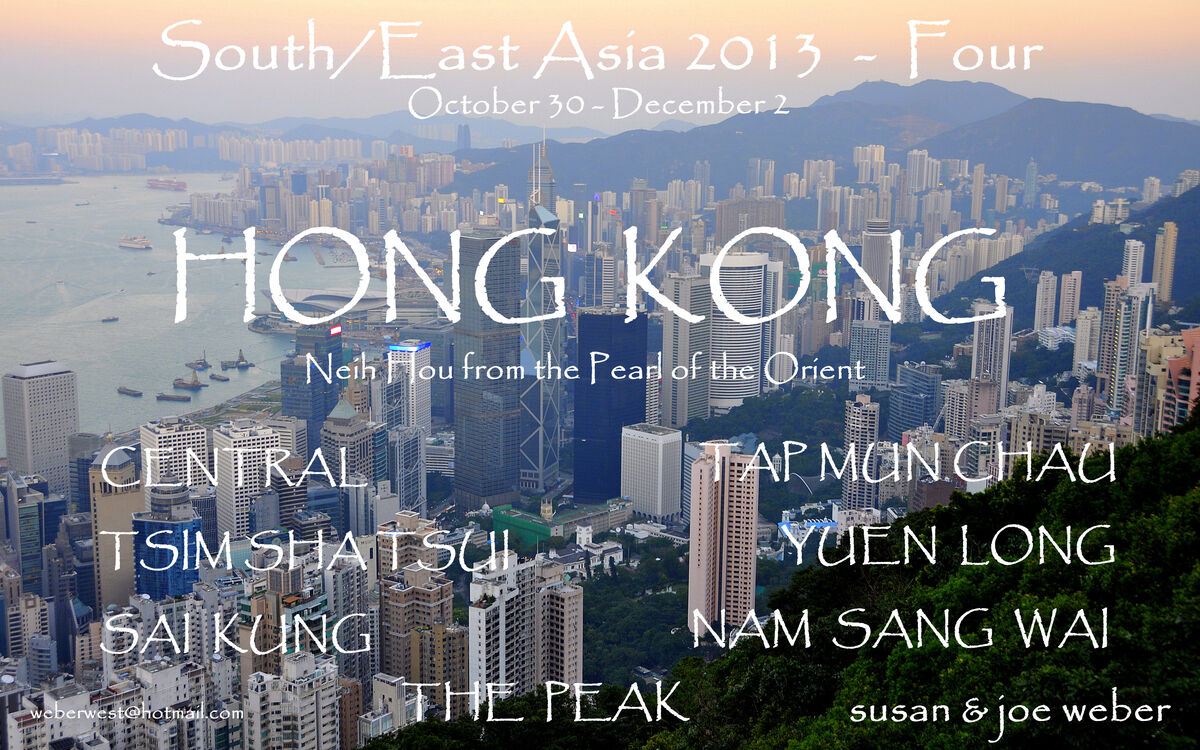
(Download)
2 - Map of our overall trip to South & East Asia to identify Hong Kong's location in East Asia and present our trip routing
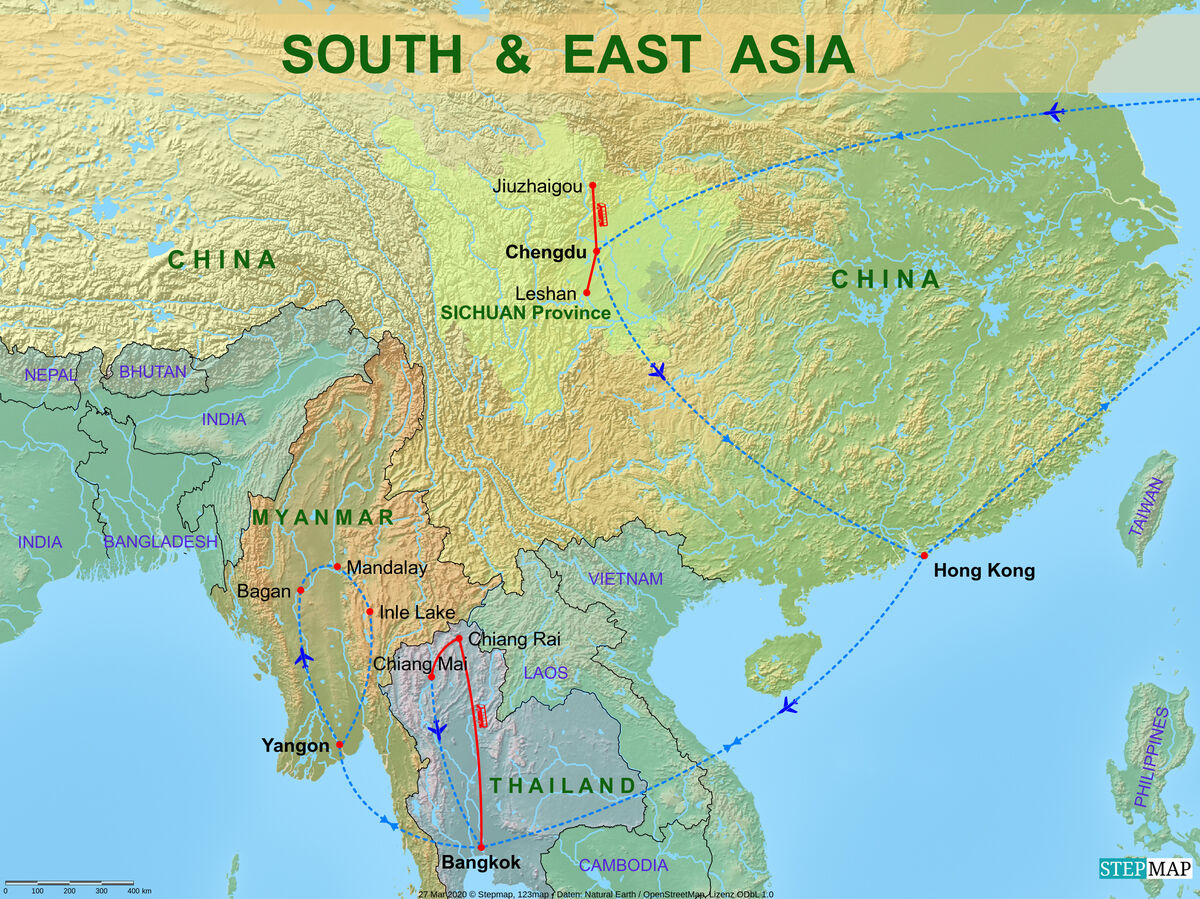
(Download)
3 - Map of Hong Kong: Identification of the locations within Hong Kong this presentation will cover over the coming month
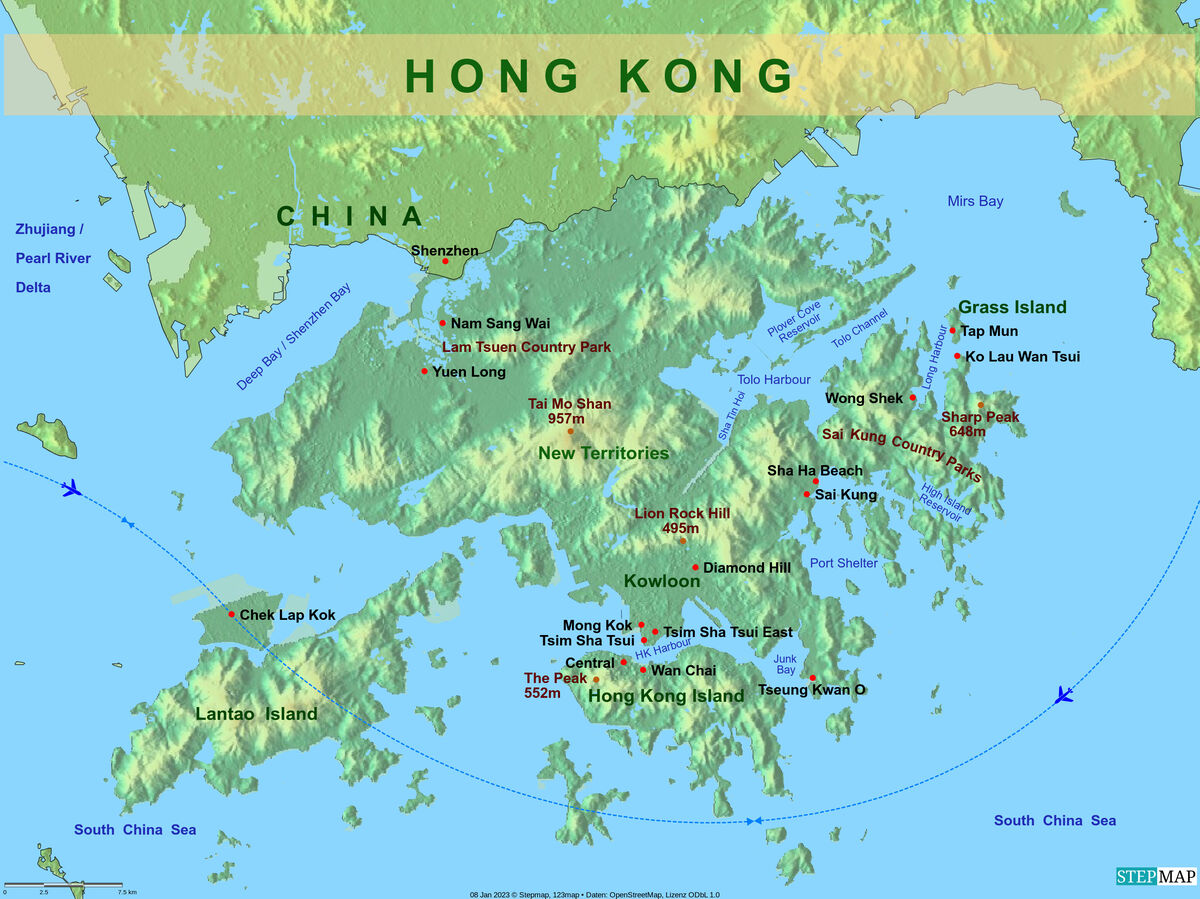
(Download)
4 - The Central District on Hong Kong Island is home to many major business enterprises: At left the Bank of China Hong Kong Tower, at right Citibank
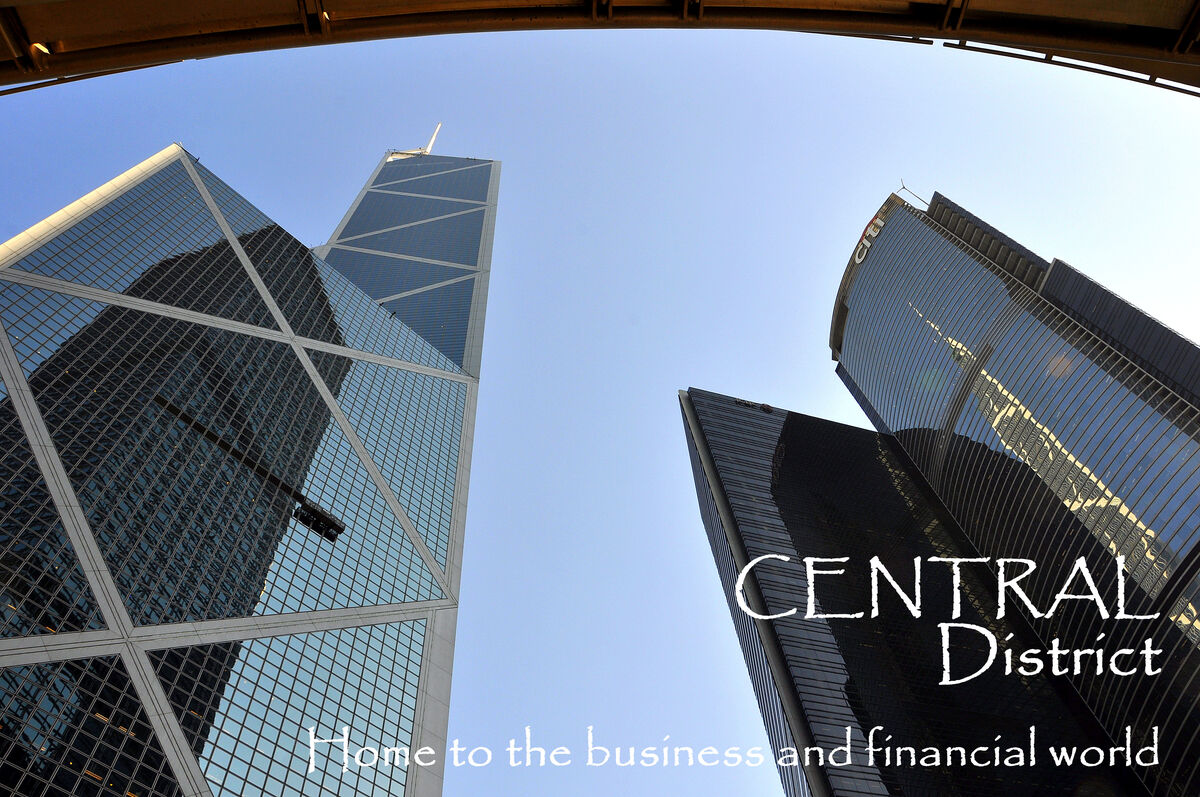
(Download)
5 - Office towers, at left the 72 storey Bank of China Hong Kong Tower, designed by the Chinese-American architect I.M.Pei, opened in May 1990, it is one of the most recognizable landmarks in the city, notable for its triangular framework design
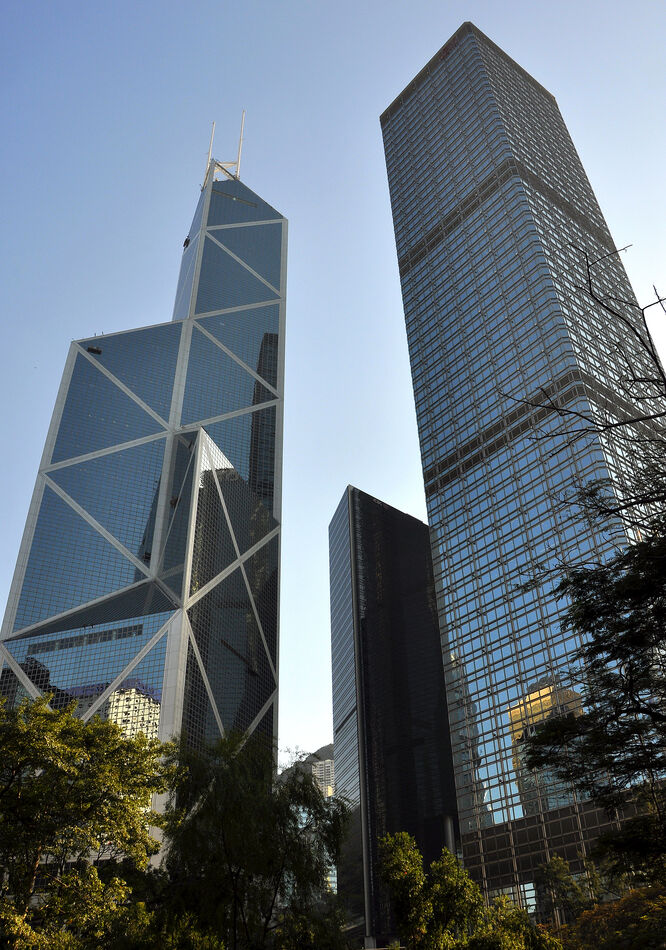
(Download)
6 - Another office tower mirroring on the glass facade of the Bank of China Hong Kong Tower
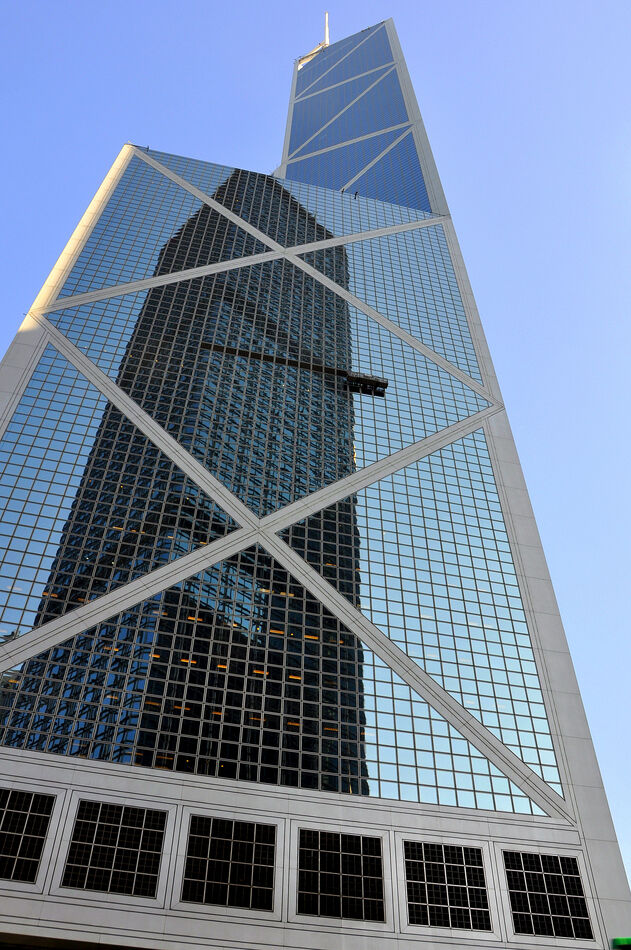
(Download)
7 - The sun-lit white structure of the Bank of China Hong Kong Tower mirroring on the Citibank building
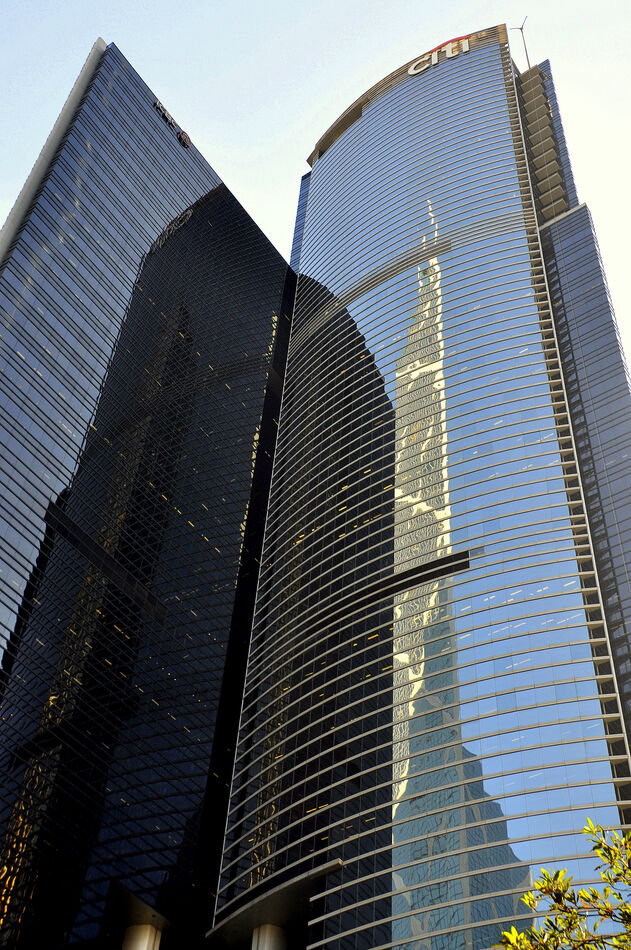
(Download)
8 - Closer take of the mirroring effect
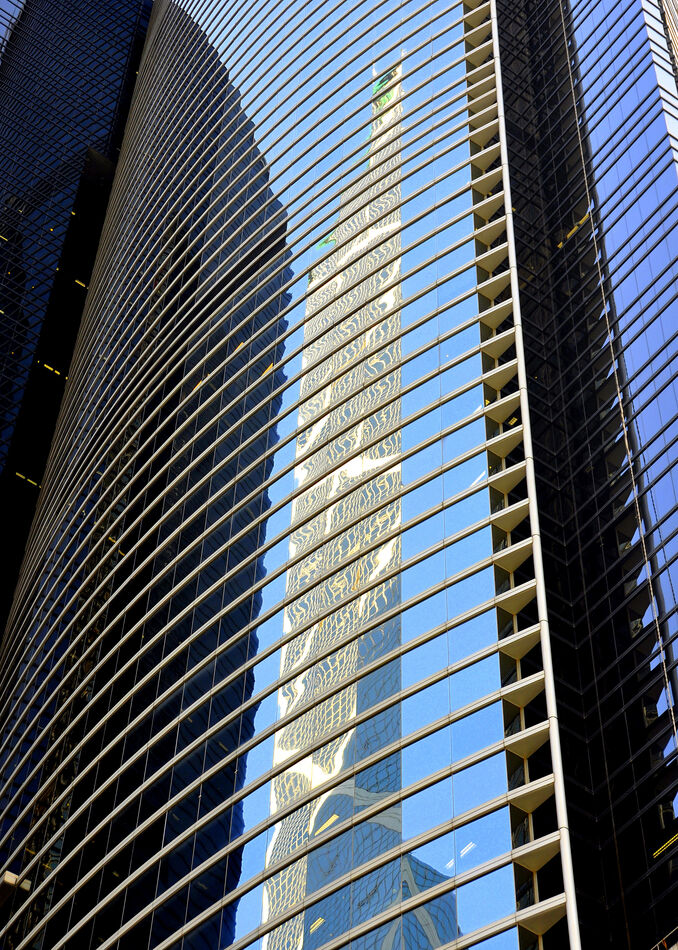
(Download)
9 - As a contrast: An old building with the Tong Sin Tan Chinese temple on Wellington Street, the facade decorated with Chinese motives, seen from the open-air escalator system
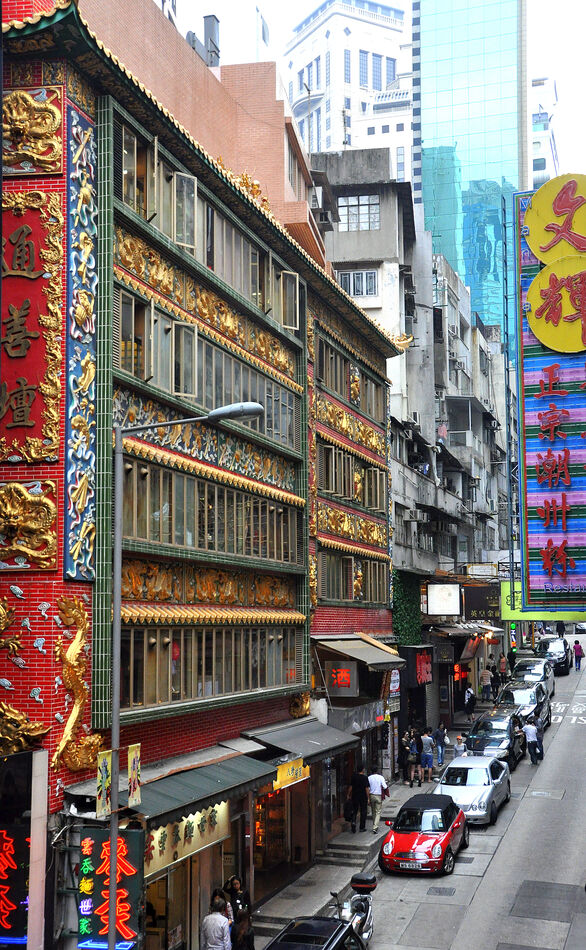
(Download)
10 - Entrance door to the famous Yung Kee Restaurant on Wellington Street in Central, a classic Hong Kong success story, growing from a food stall in 1942 to this outstanding restaurant selling its specialties of roast goose, thousand-year eggs, etc.
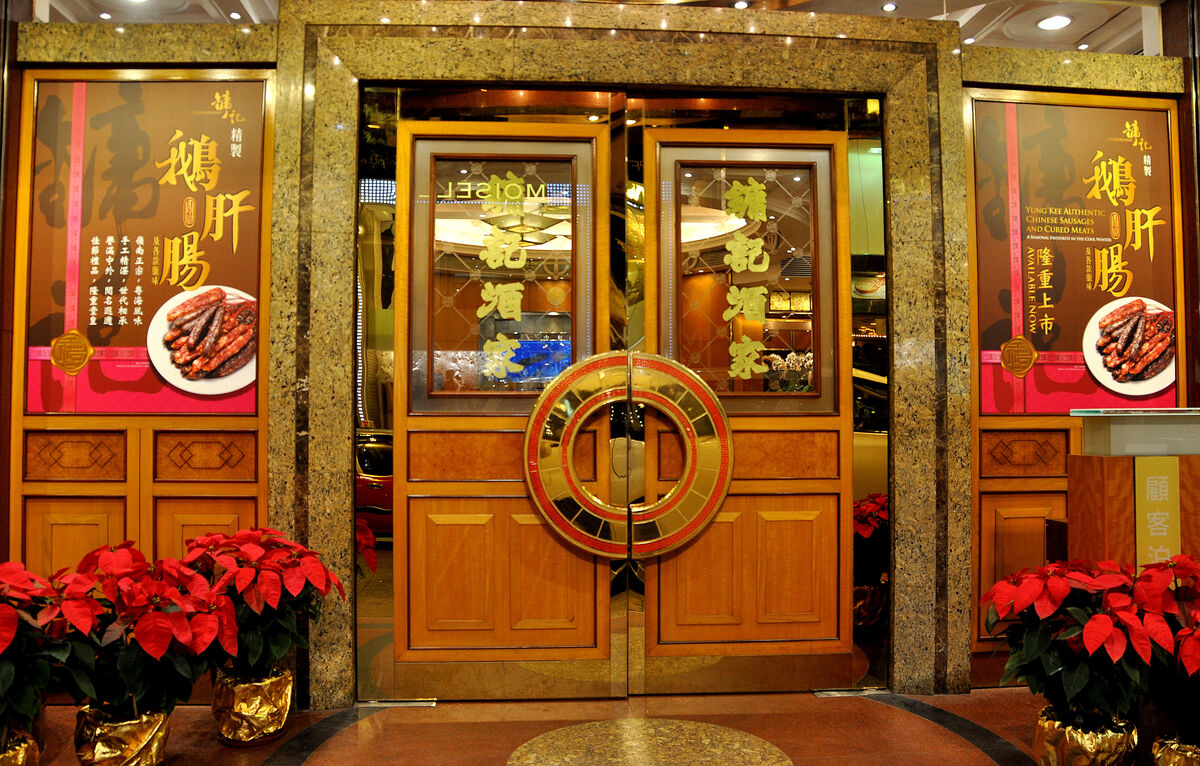
(Download)
Jan 16, 2023 11:56:26 #
Jan 16, 2023 12:02:22 #
Jan 16, 2023 12:35:36 #
Jan 16, 2023 12:46:30 #
Terrific history Joe, and photos too! Looking forward to the whole series.
Jan 16, 2023 12:49:00 #
Jan 16, 2023 12:58:53 #
Thanks for sharing another fun trip, Joe! In the 90s I belonged to a firm with offices in Hong Kong and visited a few times.
Jan 16, 2023 13:29:32 #
bittermelon wrote:
Thanks. Brings back lots of memory. Still one of my favorite cities.
Thank you bittermelon for looking in on my new segment of this long series. Glad to hear that this post brings back plenty of memories (hopefully good ones). HK still is one of my very favorite cities as well. If you have the time and interest, please stay on and look in on the tour as it unfolds - and I promise that not all the intro is going to be as long-winded as this first one!
Jan 16, 2023 13:31:26 #
Earnest Botello wrote:
Great series, Joe, good to see you back.
Thank you Earnest, it feels very good to be back and also to see you still with me on this long tour!
Jan 16, 2023 13:32:23 #
Longshadow wrote:

Thank you Bill for your thumb pointing in my favorite direction!
Jan 16, 2023 13:34:25 #
nimbushopper wrote:
Terrific history Joe, and photos too! Looking forward to the whole series.
Thank you Gary, glad to hear that you liked this long historical account and also the images - I look forward to having you with me on the last segment of this epic trip.
Jan 16, 2023 13:35:29 #
NMGal wrote:
Welcome back, Joe. A most interesting start.
Thank you Barbara for your kind comment and welcome - I look forward to go onto this memory-tour with you!
Jan 16, 2023 13:39:10 #
UTMike wrote:
Thanks for sharing another fun trip, Joe! In the 90s I belonged to a firm with offices in Hong Kong and visited a few times.
Thanks Mike for your kind comment and for still tagging along on this never-ending tour, I promise this will be the last segment!
 I do remember you mentioning earlier that you visited HK a few times in your former business life - I trust you will recognize a few of the places I am going to show, though many of them will be "out in the boonies" so to speak.
I do remember you mentioning earlier that you visited HK a few times in your former business life - I trust you will recognize a few of the places I am going to show, though many of them will be "out in the boonies" so to speak.Jan 16, 2023 13:45:34 #
Jan 16, 2023 14:28:59 #
angler wrote:
Excellent set Joe.
Thank you, Jim, for looking in on my new start-up.
If you want to reply, then register here. Registration is free and your account is created instantly, so you can post right away.






